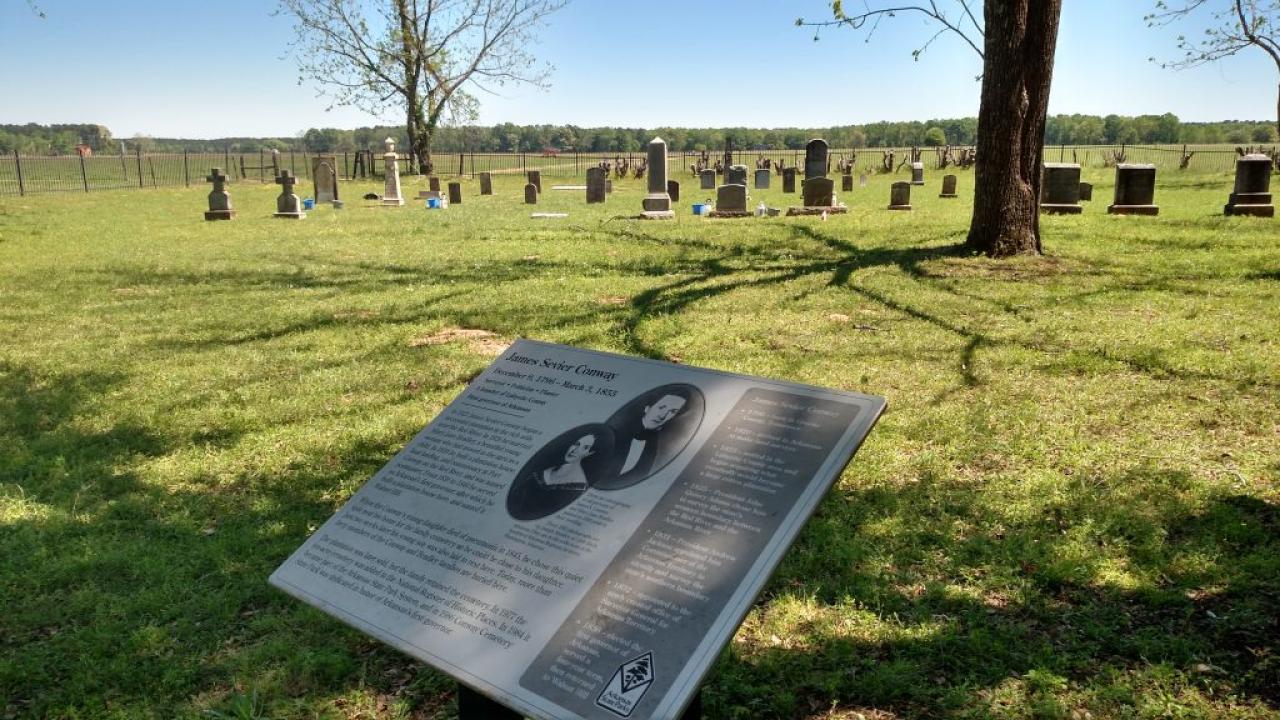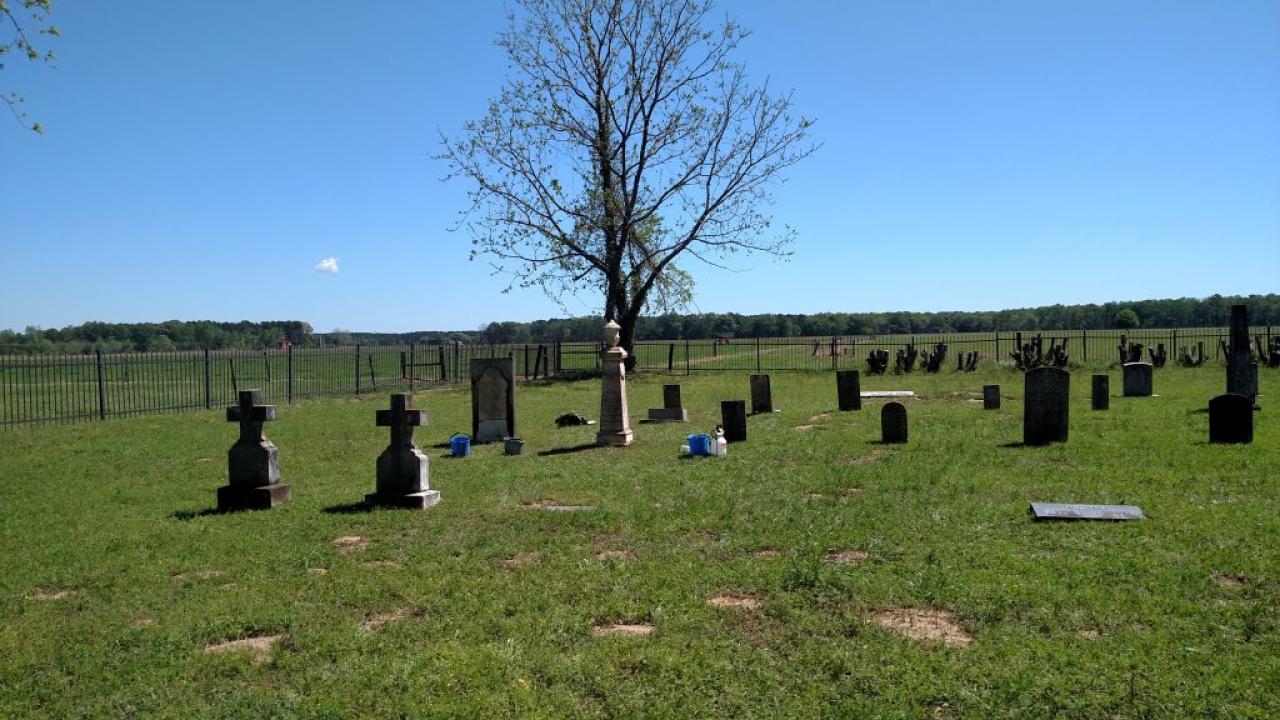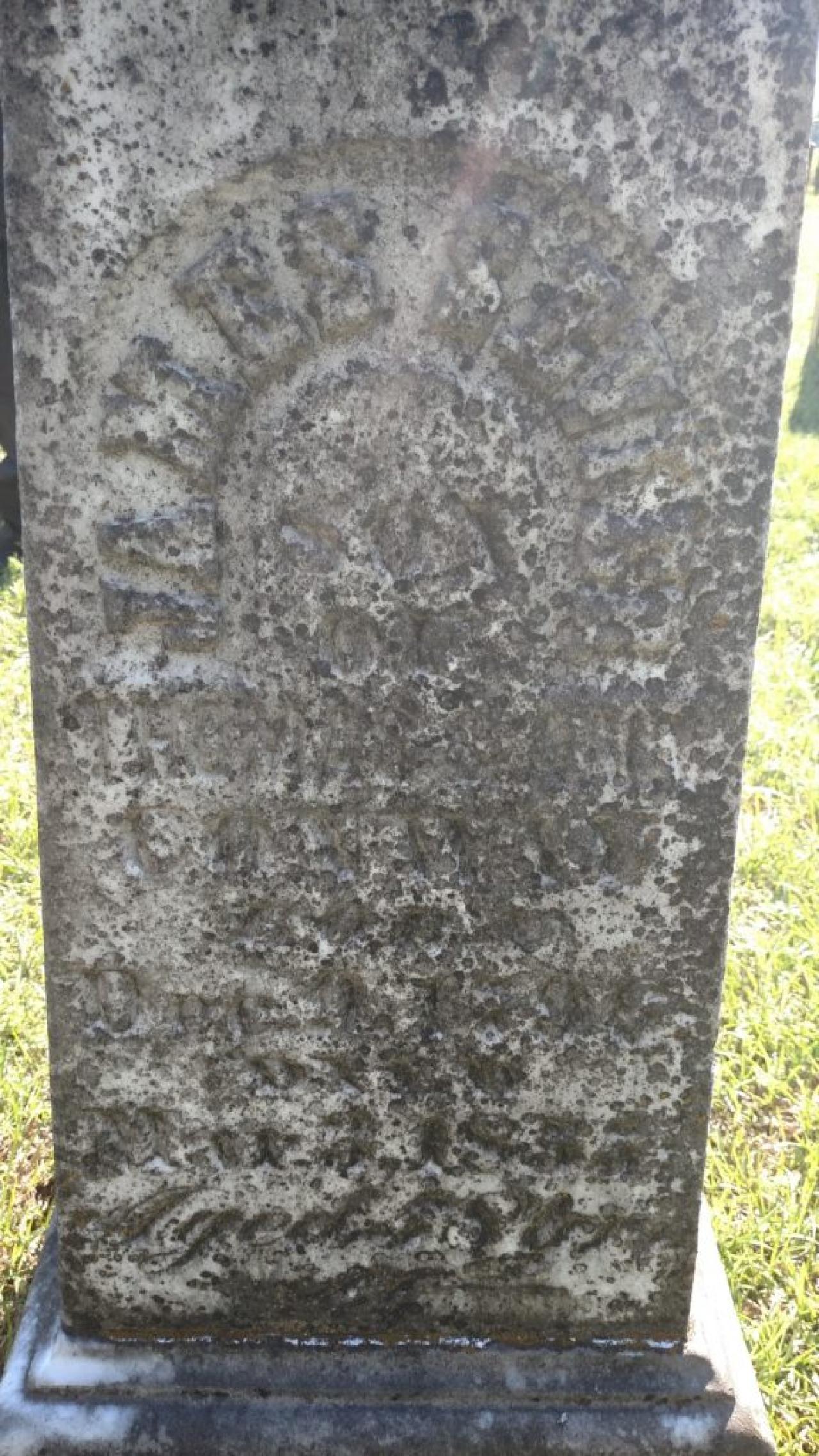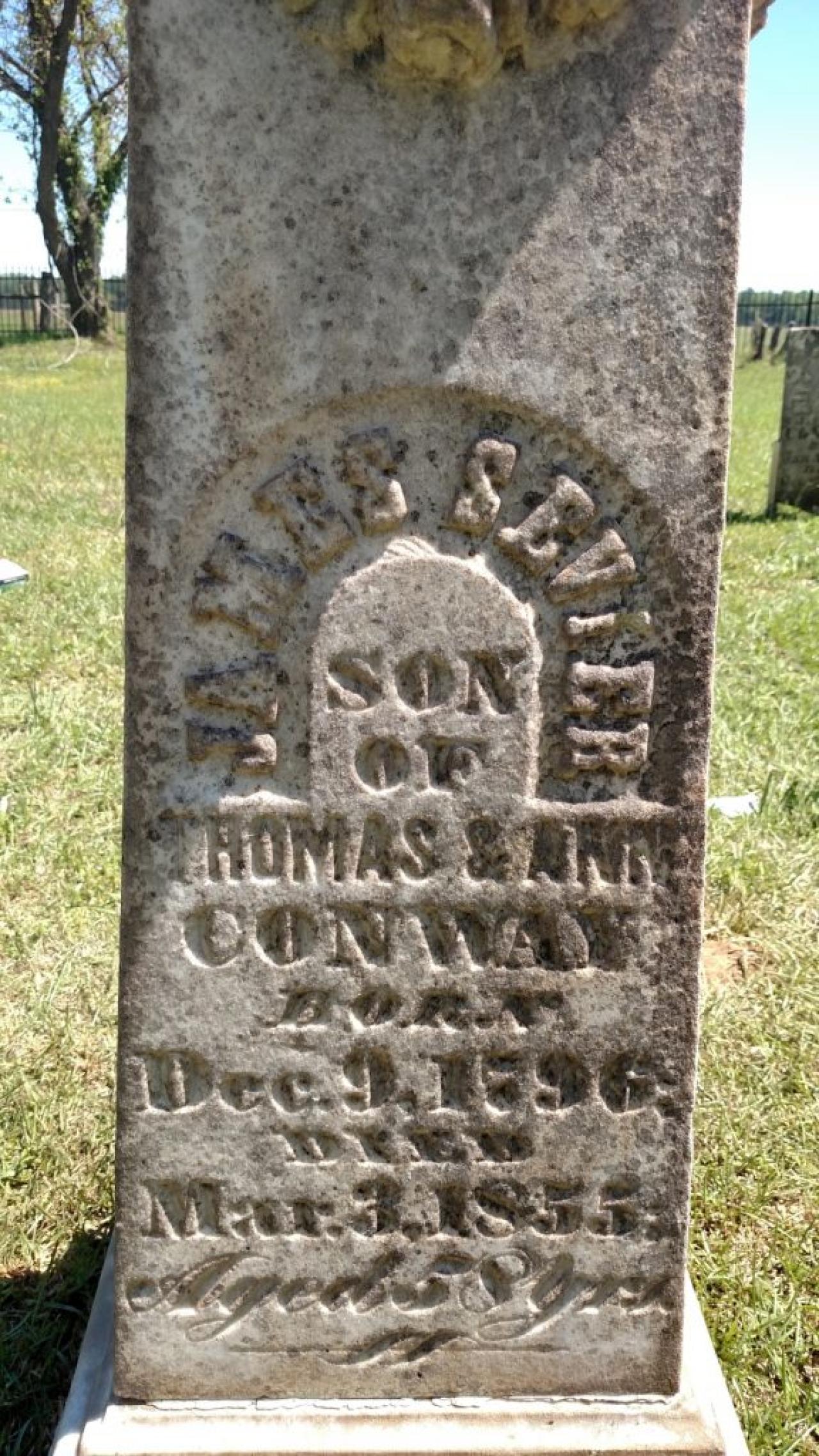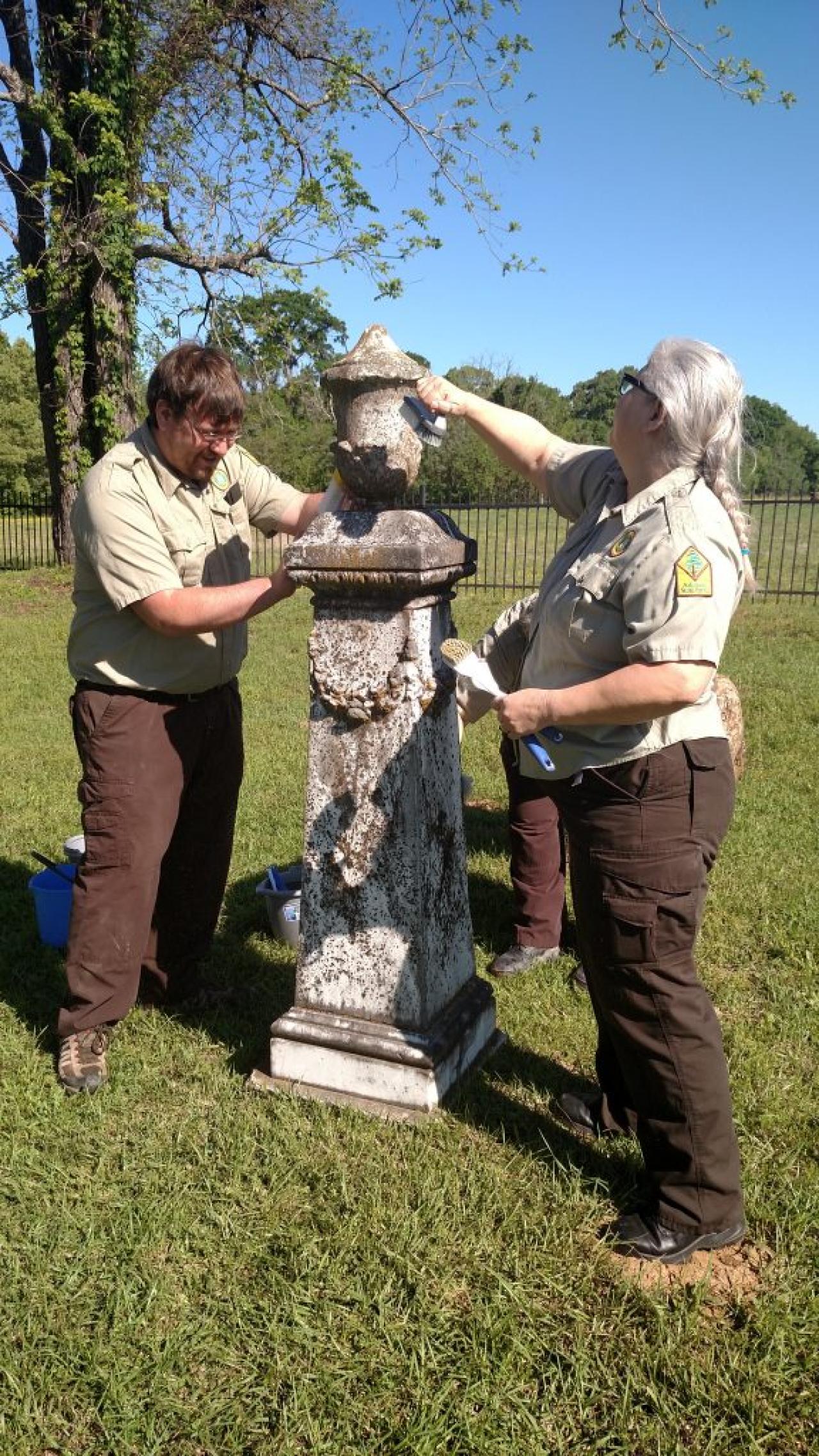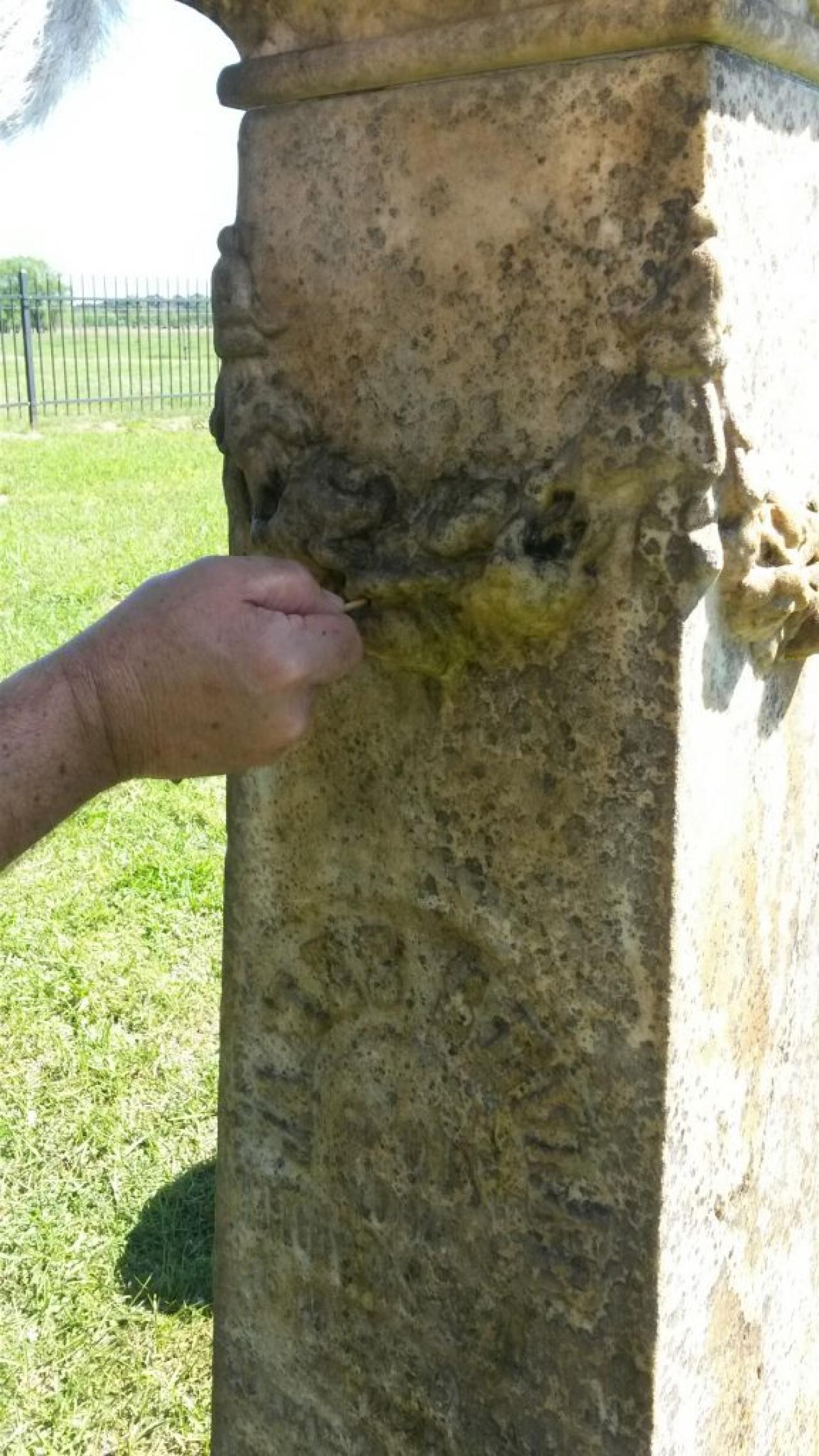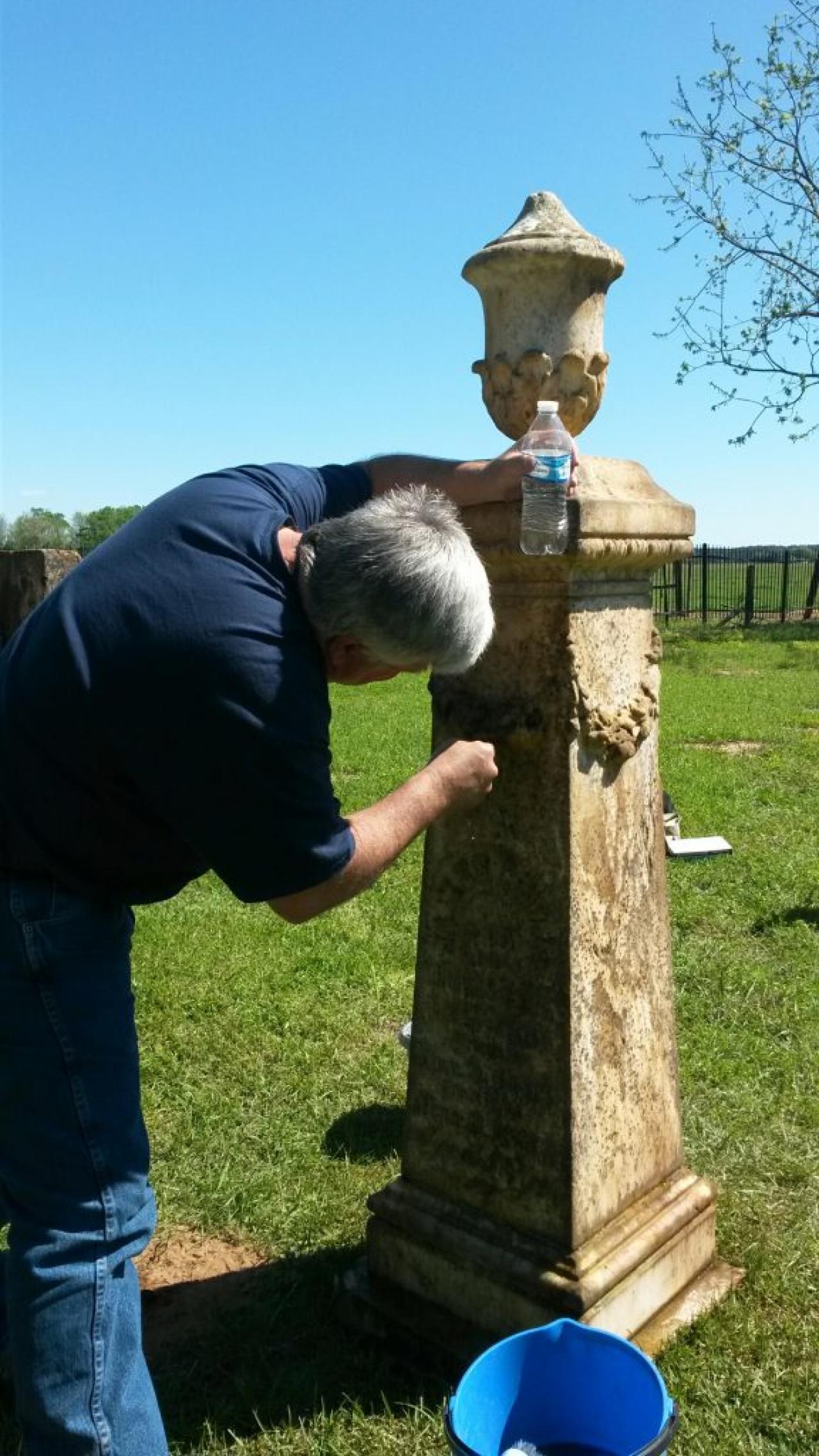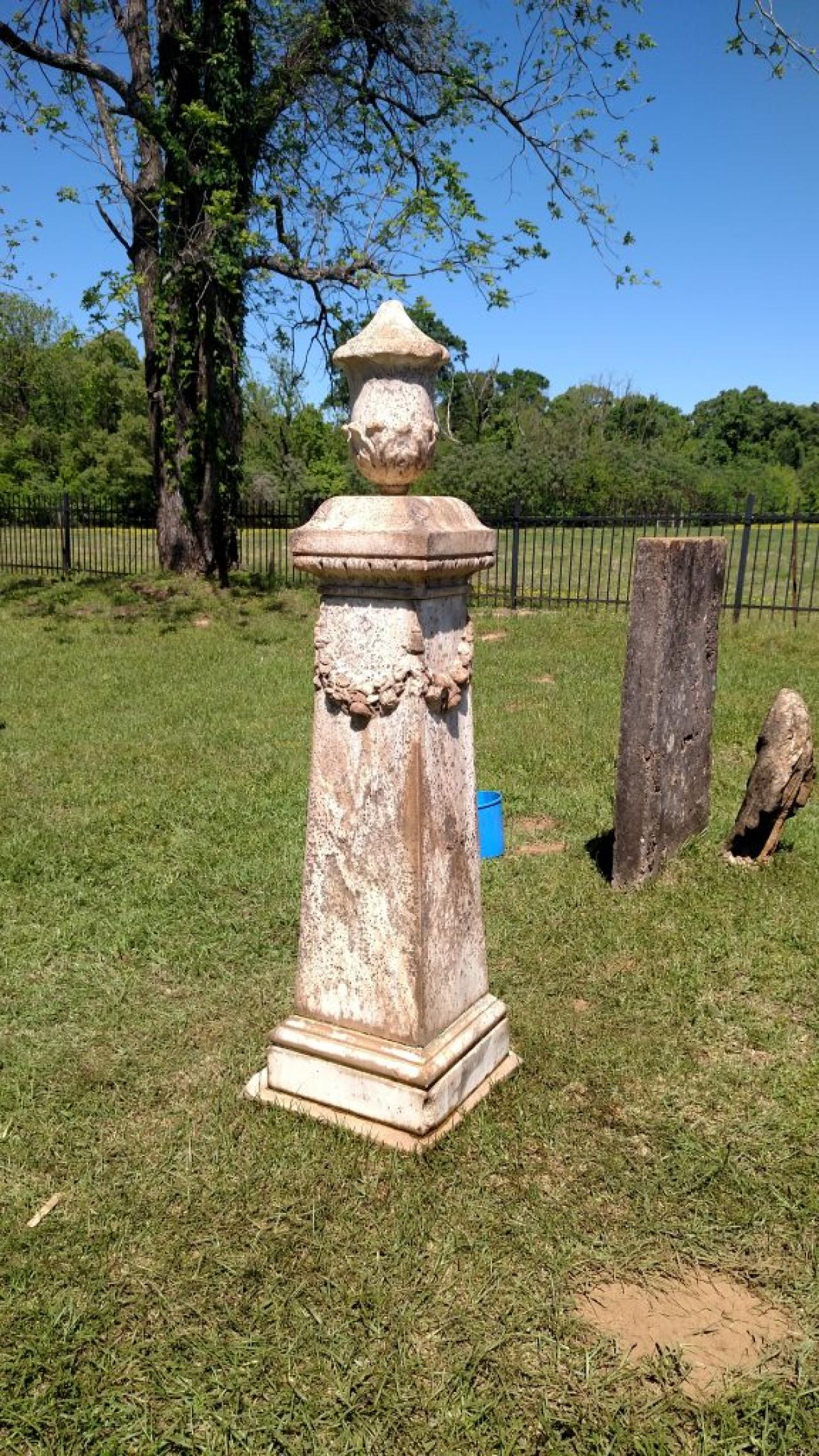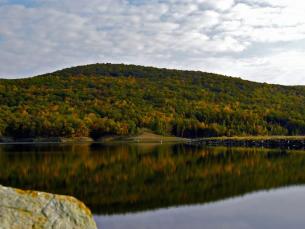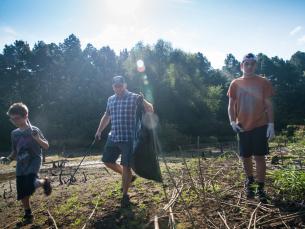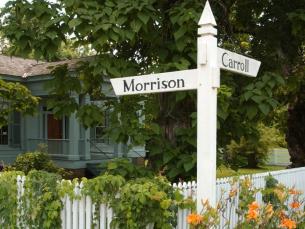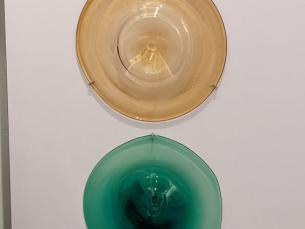Caring for Conway Cemetery State Park
By: Leita SpearsJames Sevier Conway (1796-1855), surveyor, planter, prominent and influential citizen of pioneer Arkansas, took office as Arkansas’s first governor when Arkansas was admitted to the Union as the 25th state on June 15, 1836. Dedicated to his memory, Conway Cemetery State Park preserves Governor Conway’s final resting place, the one-half acre family plot at what was once his cotton plantation, Walnut Hill. The cemetery lies just south of the former site of the Conway plantation home.
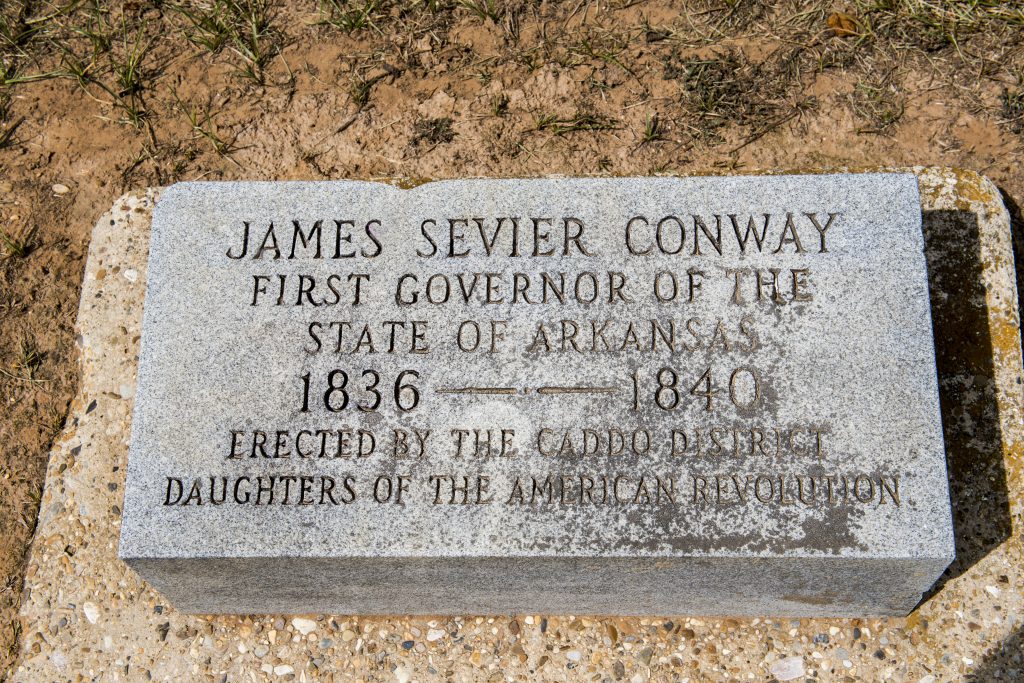
One interpretive panel has been installed and three more are in the planning stage to help visitors understand the significance and relationships to one another of those interred here. The citizens of nearby Bradley, Arkansas are to be commended for their ardent support of this state park.
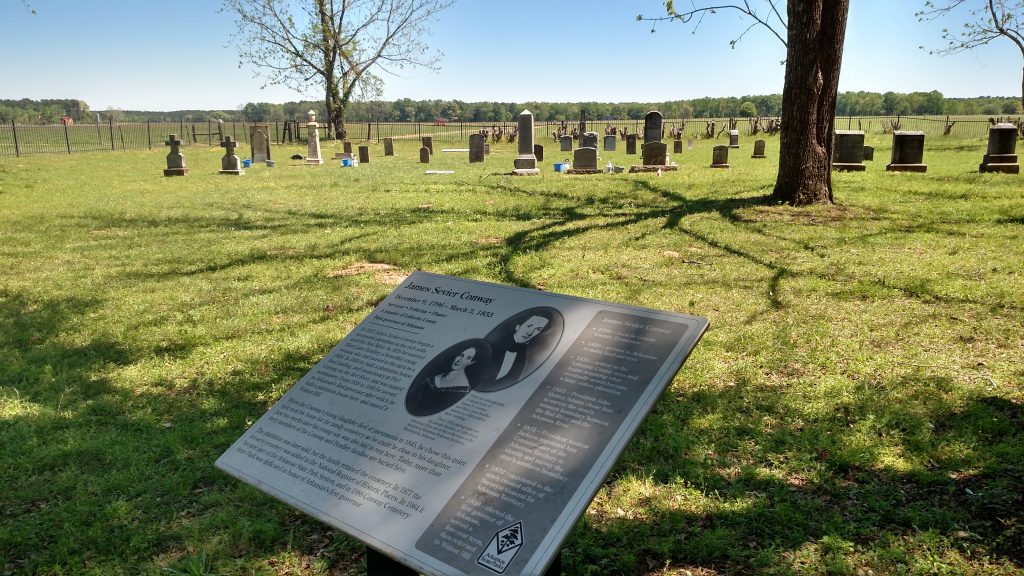
Cleaning gravestones is an important part of caring for the cemetery, and requires training to make sure it is done correctly. Logoly State Park is the park assigned to care for this small unmanned park because of its proximity. I, along with a volunteer from Historic Washington State Park, joined two Logoly employees to provide training. Seven stones were cleaned this day and all are confident that the work will continue in caring for Governor Conway’s family’s final resting place.
We hope you will stop in and look at the work began at Conway Cemetery State Park in Bradley, and the Pioneer Washington Cemetery in Washington, Arkansas. If you would like to learn more by doing a hands-on workshop, contact me, Leita Spears, at Leita.Spears@arkansas.gov. I’ve also provided step-by-step instructions below if you are interested in our process of cleaning gravestones.
We use a system that strengthens the stone and restores its PH levels, with no harmful effects. This eliminates some to the damage that can be done by other methods requiring special measurements or timing. First gather the supplies. The main ones are D2, (a biocide wash that can be purchased online), good nylon scrub brushes, buckets, paint stirring sticks or craft sticks, and wooden skewers. If there is not a water source, be sure to bring in plenty of water.
We have found pump sprayers to be an effective way to rinse in the absence of an onsite water source. Pour D2 into handheld sprayers that are easy to find at any dollar store. The D2 can be diluted 50/50 with water for less dirty stones or previously cleaned stones. Use it full strength on those that have never been cleaned or have a significant build up and discoloration. I should remind you that stone has a hardness scale. Always make sure you are cleaning the stone with items that are softer than the stone. This may sound funny, but remember those stones were soft enough to be carved into and we do not want to cause damage.
First, check the stone for stability. Any wiggle can be dangerous to the cleaner and the stone. Do not proceed on a loose stone. Next, brush any loose debris off the stone with a nylon brush. This is not a scrubbing, but just to make it easier for the D2 to get through to the stone and clean better. After dusting, starting at the bottom of the gravestone, spray the D2 on the whole stone, making sure to saturate it. Let this set for 5 – 10 minutes before scrubbing. This gives the biocide time to start killing the lichens, molds, and mildews growing on and in the stone. After the time is up, using a wet nylon brush start scrubbing the stone. After scrubbing, rinse and repeat.
The second scrubbing is where we usually bring out the paint stir sticks and skewers to get into any crevices or details on the stone. Do not be surprised by changing colors on the stone. Acidic waste products from the biological growths change to different colors as they are dying. Green and orange are common colors to experience and they will go away. The D2 is effective for up to 18 months, so each time it becomes wet, it reactivates its cleaning properties.
After the second rinse, make the call on whether to go over the whole stone a third time or not. There is no value in cleaning more than three times, so that should be the maximum. Now, let the stone dry and see the good work you have done. A cleaning like this can add 100 years to the life of a gravestone. That is why the stone was placed there in the first place, to be seen, and read by the generations that come later. This helps continue that legacy.
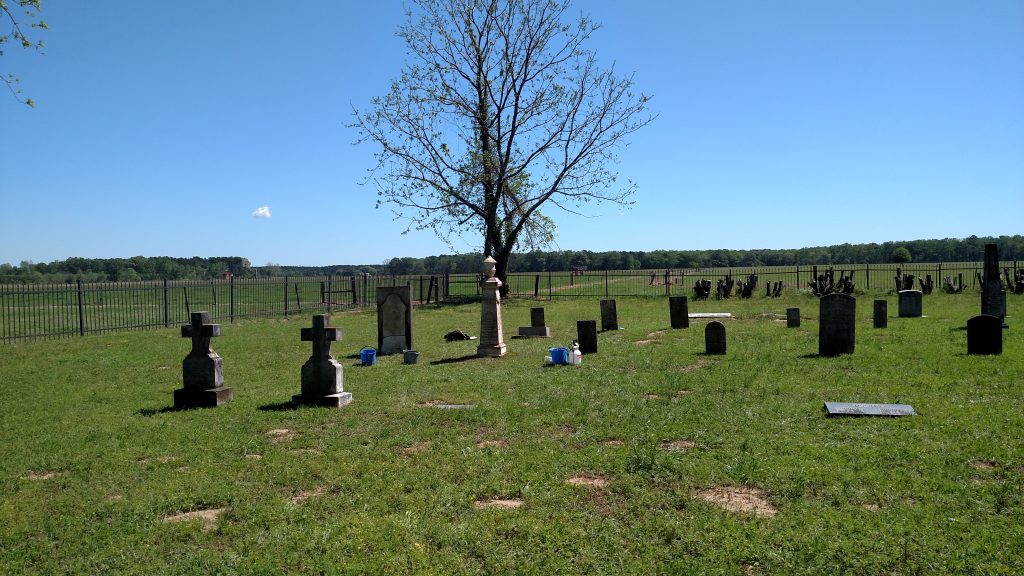
But, “What do I do with the dirty water that is left in my bucket?” you ask. It is simple, find a stone or coping that will be difficult to clean and pour it over it. The D2 in the water will help the stone and concrete by inhibiting biological growth. Because D2 can be sprayed and you can walk away leaving the stone better than before, no rinsing is needed. You have done a great thing, so pat yourself on the back. Make sure to remember those before and after pictures, so you can really compare when it’s done.
